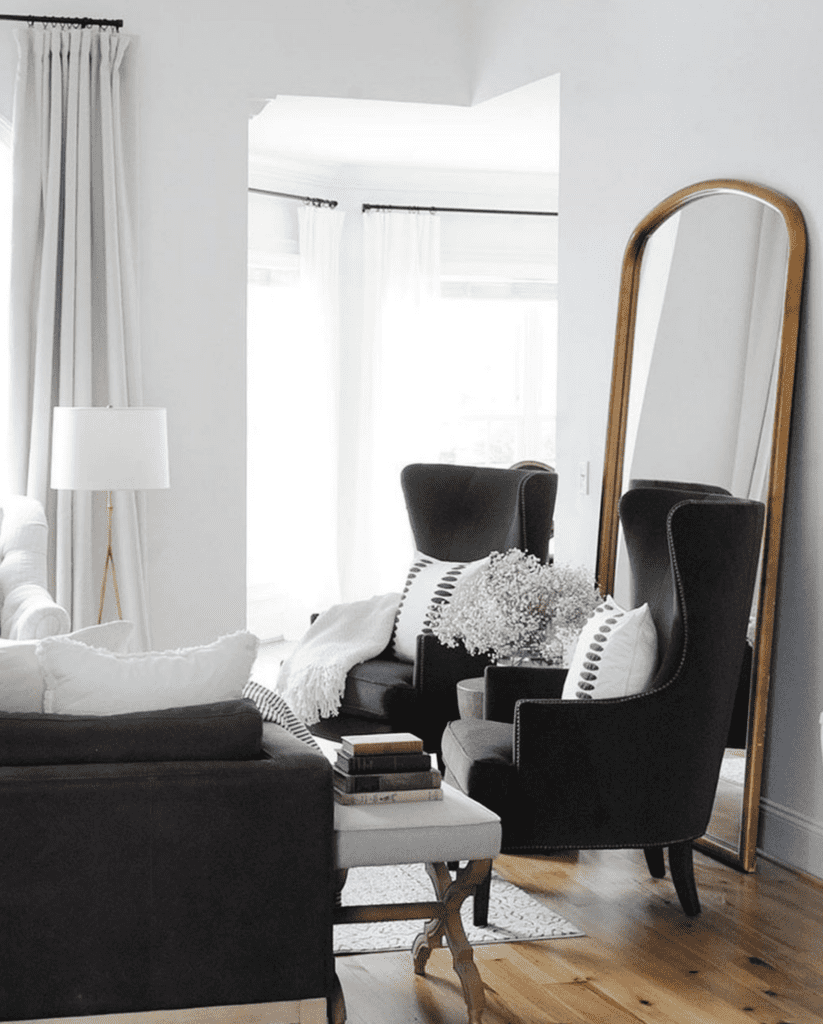10 Living Room Design Ideas To Inspire Your Minimalist Home
When you’re trying to create a minimalist space, it can be easy to go overboard. After all, when you’re trying nothing, everything looks like overkill. But that’s not to say there aren’t ways to keep things simple without sacrificing functionality or personality in your living room—or any other room of your house.
To help you design your next project, here are ten tips for creating a minimalist space that is both functional and inviting:
Paint a focal wall in a bold color
- Paint a focal wall in a bold color. A flat, stark white wall can be pretty boring. But what if you painted it bright pink or royal blue? That would add quite a bit of excitement to the room!
- Use a bold color to add interest to the room. If you’re looking for something fun and unique yet still minimalist enough that it won’t overpower your space.
- Use a bold color to add warmth or coolness depending on what season it is outside by painting an entire wall bright yellow when spring is coming around or dark grey for wintertime blues!

Focus on one design style you like
The key to minimalist living is focusing on one design style you like, rustic, modern, contemporary, or traditional. Don’t try to do everything at once. If you live in a house, maybe focus on the living room and kitchen first, then move into other rooms later. For example, a mirror with a minimalist design could be added to the living room to enhance its decor.
Don’t be afraid to try new things and change your mind if they don’t work out—but don’t be afraid of making big changes, either!
Mix materials to add interest to your minimalist space
The secret to a minimalist space is creating interest without clutter. You can use different materials, textures, levels, and color schemes to add visual interest. Patterns are also an excellent way to infuse your room with style without feeling like there’s too much going on. Just be sure that they aren’t too busy or distracting!
Add a large mirror to make your small living room appear bigger
If you want to make your small living room appear larger, adding a large mirror is one of the best ways. Mirrors not only reflect light and create a more spacious feel but they can also be used to create an illusion of depth.
This means that rather than hanging mirrors just above eye level as most people would do in their standard rooms, hanging them higher will make them look like they are reflecting something other than the wall behind them.
When choosing a mirror for your small living room, it must suit your style and the overall theme of the space. For example, suppose you have minimalist furniture. In that case, choosing a simple gold frame is probably best, but if you prefer contemporary items, perhaps try something in black or chrome for contrast.
You could also choose something unique, like an old antique frame repurposed into artwork.
Another thing to consider when choosing what type of mirror will work best within your home is size – nothing too big but not too small either! Keeping this in mind will help ensure every inch counts when creating an effect that makes even less space seem much bigger than average!
Display a few statement pieces instead of cramming the room with stuff that doesn’t fit
In a small room, it can be tempting to fill the space with lots of items, whether it’s in the form of furniture or decorations. But after doing this for years, we’ve learned that this makes the room feel cramped and cluttered. Instead, we’ve gotten into the habit of only displaying a few statement pieces—things that stand out and make your home truly unique.
Rather than cramming everything possible into every nook and cranny, focus on quality over quantity to create a calm yet interesting vibe instead.
Give your items room to breathe
You can make your room feel bigger by giving your furniture, accessories, and other things a lot of space around them. This means keeping them in proportion to each other and the room.
If you have too many items in a small space, it will look cluttered and feel cramped. Having too few things in a large area may seem empty or devoid of personality. It’s important to find a balance between these two extremes that makes your home feel warm and inviting while still feeling like an extension of yourself rather than someone else’s taste.
Let your furniture be functional
The first tip is to let your furniture be functional. Furniture should be used for more than just sitting on, so don’t go overboard with numbers if you can help. For example, get one with storage space underneath its surface instead of getting a generic coffee table to put drinks on and nothing else. This way, there’s no need for extra side tables or magazine racks in the room because everything you need is right in front of you.
Another tip is to buy furniture sets rather than individual pieces. Purchasing a couch and two armchairs will allow you to create an area where people can sit together without feeling cramped or uncomfortable—and if they feel uncomfortable, they can always move around! This will also make it easier when friends come over: everyone will have a comfortable sitting anywhere!
Use mirrors to make the most of natural light
Mirrors are the best way to make your home look brighter and bigger. They reflect and bounce light around a room, which makes it look larger than it is. If you have large windows, use mirrors inside your frames to reflect natural light from outside into your living room.
If you don’t have large windows in your living room, try hanging a classic framed mirror near or above an artificial light source like floor lamps and table lamps for added illumination throughout the space. You can also hang a mirror across from one or two pieces of artwork on one wall so that when someone enters the room, they’ll see themselves reflected instead of just seeing the artwork hanging there.
Putting an Indoor plant
The beauty of indoor plants is that they can be used to add color and life to any space. Their presence adds a touch of natural beauty to any room, whether they’re placed on a shelf or hung as a decorative piece. These days, you can find a plant to fit any style—whether you’re into minimalist design or something more opulent.
Consider placing a floor mirror in front of your plant to reflect the plant’s natural beauty while reading your favorite book or enjoying a morning cup of coffee.
Let your space reflect who you are and what you want in your life
When designing your home, let it reflect who you are and what you want in life. Don’t be afraid to make mistakes along the way—it’s only through failure that we can truly learn. You might want to start with a blank canvas or work off an existing design. Either way, remember to listen to your gut: if something doesn’t feel right, don’t settle for it!
Conclusion
We hope these design ideas will inspire you to create a minimalist living room that reflects who you are and what you want in life. It’s important to remember that not all minimalists have the same taste or style, so don’t feel like there’s only one way to do it!


